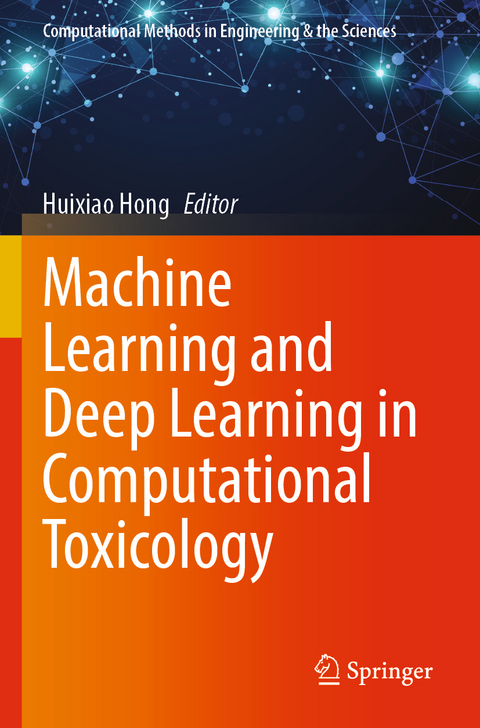
Machine Learning and Deep Learning in Computational Toxicology
Springer International Publishing (Verlag)
978-3-031-20732-7 (ISBN)
Huixiao Hong is a Senior Biomedical Research and Biomedical Product Assessment Service (SBRBPAS) expert and the chief of Bioinformatics Branch, Division of Bioinformatics and Biostatistics, National Center for Toxicological Research, US Food and Drug Administration (FDA), working on the scientific bases for regulatory applications of bioinformatics, cheminformatics, artificial intelligence, and genomics. Before joining the FDA, he was the manager of Bioinformatics Division of Z-Tech, an ICFI company. He held a research scientist position at Sumitomo Chemical Company in Japan and was a visiting scientist at National Cancer Institute at National Institutes of Health. He was also an associate professor and the director of Laboratory of Computational Chemistry at Nanjing University in China. Dr. Hong is a member of steering committee of OpenTox, a member of the board directors of US MidSouth Computational Biology and Bioinformatics Society, and in the leadership circle of US FDA modeling and simulation working group. He published more than 240 scientific papers with a Google Scholar h-index 60. He serves as an associate editor for Experimental Biology and Medicine and an editorial board member for multiple peer-reviewed journals. He received his Ph.D. from Nanjing University in China and conducted research in Leeds University in England.
Machine Learning and Deep Learning Promotes Predictive Toxicology for Risk Assessment of Chemicals.- Multi-Modal Deep Learning Approaches for Molecular Toxicity prediction.- Emerging Machine Learning Techniques in Predicting Adverse Drug Reactions.- Drug Effect Deep Learner Based on Graphical Convolutional Network.- AOP Based Machine Learning for Toxicity Prediction.- Graph Kernel Learning for Predictive Toxicity Models.- Optimize and Strengthen Machine Learning Models Based on in vitro Assays with Mecha-nistic Knowledge and Real-World Data.- Multitask Learning for Quantitative Structure-Activity Relationships: A Tutorial.- Isalos Predictive Analytics Platform: Cheminformatics, Nanoinformatics and Data Mining Applications.- ED Profiler: Machine Learning Tool for Screening Potential Endocrine Disrupting Chemicals.- Quantitative Target-specific Toxicity Prediction Modeling (QTTPM): Coupling Machine Learning with Dynamic Protein-Ligand Interaction Descriptors (dyPLIDs) to Predict Androgen Receptor-mediated Toxicity.- Mold2 Descriptors Facilitate Development of Machine Learning and Deep Learning Models for Predicting Toxicity of Chemicals.- Applicability Domain Characterization for Machine Learning QSAR Models.- Controlling for Confounding in Complex Survey Machine Learning Models to Assess Drug Safety and Risk.
| Erscheinungsdatum | 08.02.2024 |
|---|---|
| Reihe/Serie | Computational Methods in Engineering & the Sciences |
| Zusatzinfo | XIX, 635 p. 149 illus., 124 illus. in color. |
| Verlagsort | Cham |
| Sprache | englisch |
| Maße | 155 x 235 mm |
| Gewicht | 1020 g |
| Themenwelt | Informatik ► Theorie / Studium ► Künstliche Intelligenz / Robotik |
| Studium ► 2. Studienabschnitt (Klinik) ► Pharmakologie / Toxikologie | |
| Schlagworte | algorithm • Deep learning • machine learning • Model • Prediction • Toxicology |
| ISBN-10 | 3-031-20732-7 / 3031207327 |
| ISBN-13 | 978-3-031-20732-7 / 9783031207327 |
| Zustand | Neuware |
| Haben Sie eine Frage zum Produkt? |
aus dem Bereich


